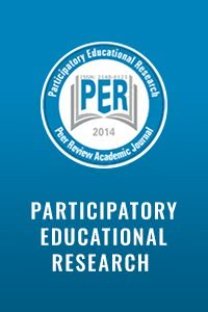Assessment Of Stem Applicatons In Terms of Students’ Opinions
The objective of this study is to find out how
students will assess STEM (Science, Technology, Engineering, and Mathematics)
applications prepared within the scope of Electrical Energy unit. To this end,
the study was conducted with 26 7th graders studying in a secondary school in
Samsun city center. Students’ diaries, interview forms and field notes were
used as data collection tool and the data obtained were assessed through
qualitative analysis method. According to the results, it was found that
students thought it was positive to conduct STEM applications in groups, however,
they also thought that these applications sometimes caused confusion, thus it
was concluded that they should be well planned. In addition, it was found that
students adapted the view that STEM applications could be used for a great
number of units since these applications are very useful and fun in terms of
learning through doing and experiencing. It is thought that including similar
group works more within the education process will give students more
experience about peer learning based on cooperation and they will be very
useful about turning information into daily life productions.
Keywords:
STEM education students’s opinions, science education,
___
- Altıparmak, M., & Nakiboğlu, M. (2005). The Effect Of Cooperative Learning on Attitudes to Laboratory and Achievement in Hıgh School Biology Laboratories. Turkish Educational Science Journal, 3(1), 105-123.
- Akaygun, S., & A.Tutak, F. (2016). STEM Images Revealing STEM Conceptions of Pre-Service Chemistry and Mathematics Teachers. International Journal of Education in Mathematics, Science and Technology(IJEMST),4(1), 56-71.
- Akgunduz, D. (2016). A Research About The Placement Of The Top Thousand Students in STEM Fields in Turkey Between 2000 and 2014. Eurasia Journal of Mathematics, Science & Technology Education, 12(5), 1365-1377
- Bybee, R. W. (2010). What is STEM education? Science, 329, 996. doi:10.1126/science.1194998
- Corlu, M.A., & Aydın, E. (2016). Evoluation of Learning Gains Through Integrated STEM Projects. International Journal Of Education in Mathematics, Science and Technology. 4(1). 29-30
- Çorlu, M. A., Corlu M. S. (2014). Free self-assessment and learning skills: What can explain learning success?. Proceedings of the Educational Researches and Publications Associations 2014 Congress (p. 81). Istanbul, Turkey.
- Dugger, W. (2010). Evolution of STEM in the United States. In Technology Education Research Conference. Queensland Federal Science, Technology, Engineering and Mathematics (STEM) Education 5-Year Strategıc Plan. (2013). Retrived from https://www.whitehouse.gov/sites/default/files/microsites/ostp/stem_stratplan_2013.pdf
- K. Erdamar, G., & Demirel, H. (2010). Preservice Teachers’ Perceptions of Group Work. Ahi Evran University Journal of Kırşehir Education Faculty. 11(3), 205-223.
- Marshall, C., Rossman, G.B. (1995). Designing qualitative research.(85).
- Miaoulis, I. (2009). Engineering the K-12 curriculum for technological innovation. IEEE-USA Today’s Engineer Online.
- Next Generation Science Standards. (2013). The next generation science standards. Retrieved from http://www.nextgenscience.org/next-generation-science-standards National Academies Report Rising Above the Gathering Storm. (2005). Proceedings of the American Philosophical Society, 149(2).
- P21. (2015). Partnership For 21st Century Learning 2015. Retrieved From http://www.p21.org/storage/documents/P21_framework_0515.pdf
- Şahin A., Ayar C.M., & Adıgüzel T.(2014). STEM Related After- School Program Activities and Associated Outcomes on Student Learning. Educational Science, Theory& Practice. 14(1). 309-322
- Ünlü, M., & Aydıntan, S. (2011). The Vıews Of 8th Grade Students Related To Students Teams-Achievement Divisions Technique in Mathematics Education. Abant İzzet Baysal University Journal of Education Faculty. 11(1),101-117
- Yıldırım. B., & Altun. Y. (2015). Investigating the Effect of STEM Education and Engineering Applications on Science Laboratory Lectures. El Cezeri Journal of Science and Engineering 2(2). 28-40
- ISSN: 2148-6123
- Yayın Aralığı: Yılda 6 Sayı
- Başlangıç: 2014
- Yayıncı: Özgen KORKMAZ
